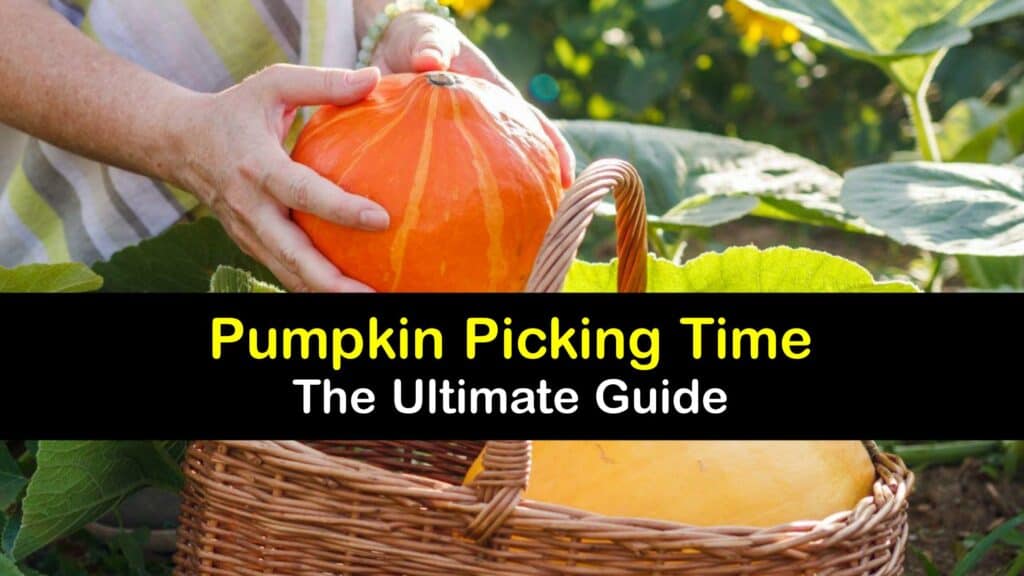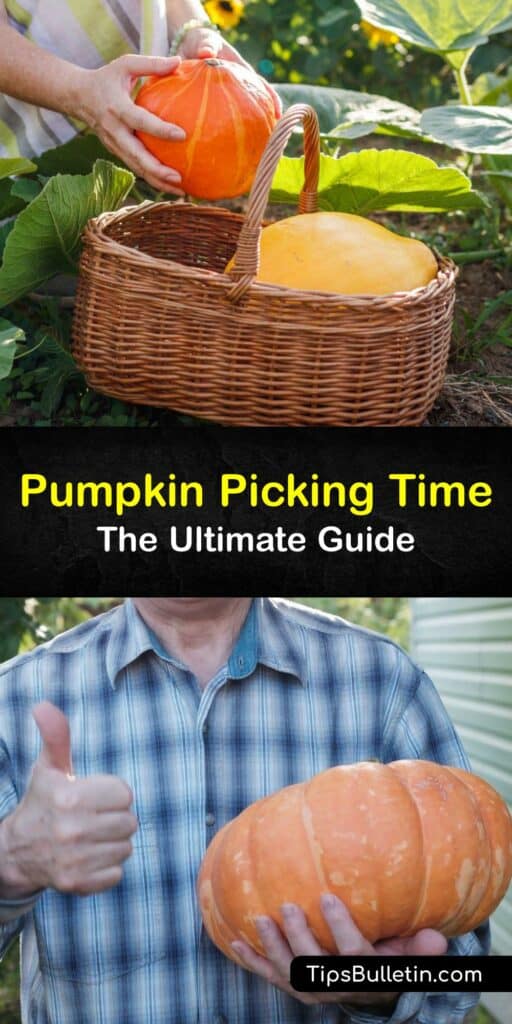Pumpkins are probably the most recognizable winter squash, known for their shape and signature orange color. Whether you grow pumpkins for food, decoration, or entertainment purposes, learning how to harvest pumpkins is vital for bringing your squash out of the garden for the fall season.
How long does it take for pumpkins to grow? Generally, it takes pumpkins around 100 days to reach maturity; however, this estimate is for pumpkins grown for consumption. The variety of winter squash grown for cooking differs from the pumpkin varieties grown for decorations. Jack Be Little is a type of miniature pumpkin ideal for making jack-o-lanterns.
These orange vegetables symbolize the fall season in North America, where pumpkins originated. Most of the parts from small sugar pumpkins are edible; from this squash, we make pumpkin purée. Instead of making a purée, Cinderella pumpkins are steamed, roasted, or eaten mashed. Many eat miniature pumpkins like zucchini squash or roast pumpkin seeds as a snack.

Tips for Harvesting Pumpkins
The size of the pumpkin you grow determines how fast it reaches maturity and it’s important to know the way to tell the difference between squash, gourds and pumpkins. Most miniature pumpkin varieties go through their pumpkin growing stages are ready for harvest as soon as 70 days from planting.
Some gardeners rely on the number of days in their growing season to determine pumpkin harvest time, but like with other squash plants, observing your crop can be the best method of determining if it’s time to start harvesting pumpkins.
Knowing When to Harvest Pumpkins
As your pumpkin plants grow, you make a DIY fertilizer for pumpkins and care for them, and they develop a mature color. It can feel like a race against time to harvest mature pumpkins before it’s too late, whether you have pumpkins in containers or a garden plot. As long as your pumpkin vines and leaves are healthy and there is no sign of disease, your gourds are fine to continue growing on the vine.

Pumpkin plants grow by taking in direct sunlight, and if your plant’s leaves die or have severe pest damage, there is no point in leaving your squash on the vine. The one condition of leaving your pumpkin on the vine is to ensure the first hard frost of the fall season is not coming soon.
When are pumpkins ready to harvest? Visual clues are the best factor to judge if your pumpkin is ready to come off the vine to determine when to harvest pumpkins. Your pumpkin’s rind should be fully colored, and the rind should be firm.
Testing to Determine When to Pick Pumpkins
Like watermelons, press your fingernail gently against the rind to test your pumpkin. If your nail pierces the skin or leaves a mark, your pumpkin is not ready to pick. If you harvest a soft-rind pumpkin despite the fingernail test, expect the pumpkin to wilt and spoil after you take it out of the pumpkin patch.
Another way to tell if it’s time to harvest is to check the stem and vine. Pumpkins are ready to harvest when their vines begin to dry and come away from the stems. At this point, the stem may shrivel and curl. If your pumpkin has full color, the rind is solid, and its stem is drying, your pumpkin is ready to harvest.
If the threat of frost is approaching, you can still harvest the squash if its color is not complete as it continues to ripen off the vine. It is preferable to allow your pumpkin to fully mature on the vine, but a pumpkin hit by frost experiences a shortened storage life.
How to Harvest Pumpkins
Select a sunny day after morning dew dries to harvest your pumpkins. Wear gloves to hold the vine and the stem, and use a sharp knife or pruning shears to harvest your pumpkin. Measure at least six inches of stem from the top of the pumpkin to make your cut.
After cutting your pumpkin off the vine, pull the vines to dispose of or add them to compost. Inspect your plants for signs of powdery mildew to ensure you don’t add any infected plant debris to the compost or leave it lying in your garden where the fungus could overwinter in the mulch.
After harvesting pumpkins, it’s time to cure your yield. Curing allows your pumpkins to harden their rinds, extending their life after harvest. Once the pumpkins are off the vine, arrange them in a single layer in a dry place that receives direct sun for at least two weeks.
A sunny spot in your garden is the easiest place to cure your pumpkins, but a room indoors with relative humidity and good air circulation is fine if you ensure your pumpkins aren’t disturbed.
If you decide not to cure pumpkins after harvest, expect them to last for a few weeks before signs of decay start showing. Cured pumpkins hold for several months, allowing you to get more out of your squash beyond the Halloween season.
Ensure you get the most from your pumpkins. Learn the different ways to compost pumpkins or feed local wildlife with the leftovers.
Using Pumpkins After Harvest
Although the pumpkin’s stem looks like the perfect handle, the stem acts as a seal for the pumpkin and can’t always support the weight of the squash. If you carry a heavy pumpkin by its stem and the stem pulls away, your pumpkin decays faster.
If you plan on carving a pumpkin for Halloween, the goal is to keep your decoration looking fresh longer. After opening and gutting your pumpkin, natural decay and dehydration begin affecting your pumpkin’s appearance.
To keep your pumpkin looking nice after carving, clean it with bleach to kill any mold on the rind. Dunking your pumpkin in a bleach solution or spraying it with diluted bleach works well in killing mold and preventing bacteria from attacking your pumpkin.
Spray the outside of your pumpkin with bleach spray and wipe it down with a white cloth before allowing the pumpkin to dry—tea tree oil and water fight fungus and mold on your pumpkin, too.
To prevent your pumpkin from looking shriveled around the cut areas of your design, apply a water-repelling lubricant to the pumpkin. Vegetable oil or petroleum jelly helps hold onto the moisture in your pumpkin.
Pumpkins are a crop everyone should grow at least once. Knowing the right time to harvest means you get the best experience growing pumpkins and enjoy all the tasty treats you can make from pumpkins.

If you learned how to harvest pumpkins with our help, please share our guide on when to harvest pumpkins with your friends on Facebook and Pinterest.